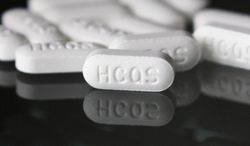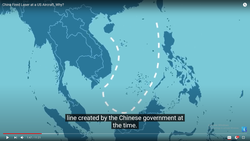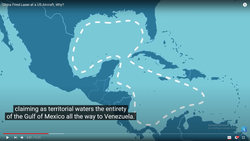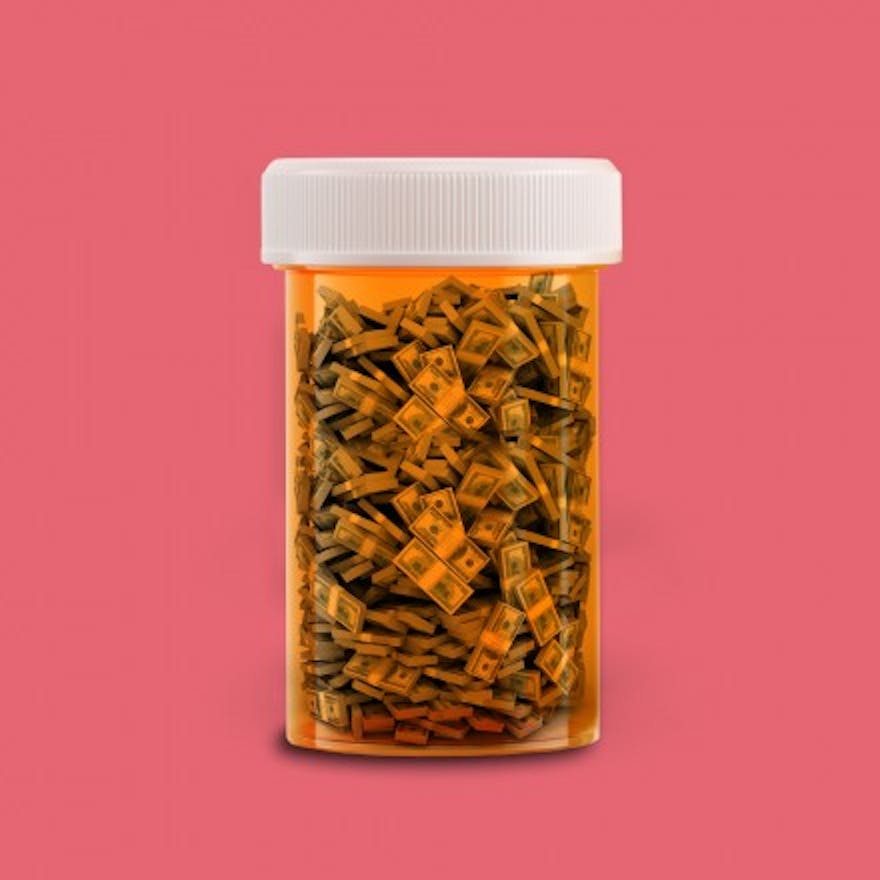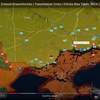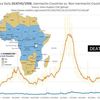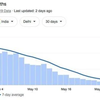Bloggfærslur mánaðarins, ágúst 2020
Meiri íslenska neðar
… Allt breyttist í maí þegar Lancet, gaf út rannsókn sem sagði að HCQ meðferð við COVID-19 væri árangurslaus. Vinstri öflin, demokratar? réðust strax á Trump fyrir að hafa hælt HCQ lyfinu.
En, aðeins nokkrum vikum síðar, voru höfundar rannsóknarinnar neyddir til að biðja Lancet vísindaritið? um að draga rannsóknina til baka, vegna þess að rannsóknarfyrirtækið, sem hafði látið þá fá gögnin sem þeir höfðu treyst á, gat ekki eða vildi ekki staðfesta gögnin.
Allt í einu voru þeir sem voru á móti því að nota HCQ lyfið, Anti-HCQ uppvísir að nota falskar upplýsingar. …
Meiri íslenska neðar
000
How the hydroxychloroquine debate proves politics can get in the way of science
Baráttan um HCQ sannar að stjórnmáli geta lokað á vísindin, sannleikann
https://www.washingtontimes.com/news/2020/aug/18/how-the-hydroxychloroquine-debate-proves-politics-/
Smá kafli endursagður á íslensku hér fyrir neðan.
Trofim Lysenko, Stalin’s director of biology, is best remembered for blocking the science of Mendelian genetics because the science was stubbornly resistant to Marxist ideology. Consequently, the entire field of genetics was banned in the USSR. Politics-driven science — what could possibly go wrong?
Unlike citizens of the former Soviet Union, Westerners are much less familiar with seeing science fully subordinate to political agendas.
But with the hydroxychloroquine debate of 2020, we are getting a taste of it.
Endursagður smá kafli hér fyrir neðan.
Hydroxychloroquine hefur verið í notkun um allan heim í meira en 65 ár.
Það hefur verið gefið, ávísað milljarða sinnum.
Núna hefur pólitíkin og hatur á Trump, komið af stað baráttu til að koma í veg fyrir að COVID-19 sjúklingar fái hydroxychloroquine.
Byggt á bestu sönnunargögnum sem í boði eru í dag, hefur hýdroxýklórókín -HCQ, reynst árangursríkt í meðferð snemma í COVID-19, veikindunum.
(Ef HCQ lyfið er gefið strax drepur það vírusinn, og þá veikist ekki líkaminn, og þá komast sýklarnir ekki í líffærin, en þá þarf að drepa með sýkla lyfjum. Jg)
Vegna stjórnmálana eru þessi sönnunargögn hunsuð.
Eftir allt, ef það er áhrifarík meðferð fyrir COVID-19, þá eru kannski útgöngubönn og fjarnám fyrir börnin okkar og grímu fyrirmæli og félagsleg fjarlægð ekki nauðsynlegar, frá læknisfræðilegu sjónarmiði.
Og ef þetta er ekki nauðsynlegt frá læknisfræðilegu sjónarmiði, þá gæti afsökun sem við notum til að halda skólunum lokuðum fyrir námi, og til að halda fyrirtækjum lokuðum, og til að halda restinni af samfélaginu undir þvingunum ríkisstjórnarinnar(öll lokun óþörf jg).
(þarna vill Trump nota lyfin, en gamla stjórnkerfið vill ekki leyfa lækninguna, til að geta kennt Trump um vandræðin. Er þessu fólki alveg sama þótt hundruð þúsunda deyi, trúir það ekki á góðan Guð? Hvað ætlar þetta fólk að segja, þegar fólkið skilur þetta? Heldur fólkið virkilega að RUV og allir fjölmiðlarnir geti haldið okkur frá sannleikanum? jg)
Það var í mars þegar Trump forseti fór að lofa ávinning af HCQ sem hugsanleg meðferð í meðferð COVID-19. - 19. mars tilkynnti hann að FDA myndi flýta samþykki nokkurra meðferða, þar á meðal HCQ. Hann sagði að lyfið "hafi verið notað lengi og væri því vel þekkt og ætti ekki að drepa neinn.
Þremur dögum síðar skrifaði Wall Street Journal um góða kosti HCQ notað með azithromycin, sem er almennt þekkt sem zithromax (Z-pakþ
(alltaf verður að gefa HCQ strax, þá drepur það vírusana, og þá veiklast líkaminn ekki, og engir, eða fáir sýklar ná að komast í líffærin, þá þarf að nota sýkla lyf. jg) …
… Allt breyttist í maí þegar Lancet, gaf út rannsókn sem sagði að HCQ meðferð við COVID-19 væri árangurslaus. Vinstri öflin, demokratar? réðust strax á Trump fyrir að hafa hælt HCQ lyfinu.
En, aðeins nokkrum vikum síðar, voru höfundar rannsóknarinnar neyddir til að biðja Lancet vísindaritið? að draga rannsóknina til baka, vegna þess að rannsóknarfyrirtækið, sem hafði látið þá fá gögnin sem þeir höfðu treyst á, gat ekki eða vildi ekki staðfesta gögnin.
Allt í einu voru þeir sem voru á móti því að nota HCQ lyfið, Anti-HCQ uppvísir að nota falskar upplýsingar. …
FDA gaf út yfirlýsingu um afturköllun á neyðarheimildinni frá í mars - afturköllunarheimild, sem leifir læknum aftur að ávísa HCQ "Off label" fyrir COVID-19 sjúklinga.
Og 02.07.2020 kom ný rannsókn, sem birt var af Henry Ford Health System, lýsti því að meðferð með HCQ fækkaði dauðsföllum um helming hjá sjúkum sjúklingum á sjúkrahúsi með COVID-19-og, critically, sérstaklega, án hjartatengdra aukaverkana sem sumar rannsóknir höfðu sýnt.
Ekki meiri endursögn.
Hydroxychloroquine has been in use worldwide for more than 65 years. It’s been prescribed safely billions of times.
And yet, for political reasons — and, more specifically, for anti-Trump reasons — there is a lobbying campaign to block hydroxychloroquine from patients with COVID-19.
Based on the best evidence available today, hydroxychloroquine — HCQ, for short — has been shown to be effective in early-stage treatment of COVID-19, the illness brought on by the novel coronavirus.
Because of hyper-politization, however, this evidence is being ignored.
After all, if there’s an effective treatment for COVID-19, then maybe the shutdowns and distance learning for our children and mask mandates and social distancing requirements aren’t necessary, from a medical standpoint.
And if they’re not necessary from a medical standpoint, then what excuse could we use to keep the schools closed for in-person learning, and to keep the businesses shuttered, and to keep the rest of society under the government’s thumb?
It was way back in March when President Trump first touted the benefits of HCQ as a potential therapy in treating COVID-19. On March 19, he announced that the FDA would fast-track approval of several treatments, including HCQ. He said the drug “has been around for a long time so we know if things don’t go as planned it’s not going to kill anybody.”
Three days later, The Wall Street Journal published a piece extolling the virtues of HCQ in combination with azithromycin, more commonly known as Zithromax (Z-Pak).
The authors — Dr. Jeff Colyer, chairman of the National Advisory Commission on Rural Health, and Dr. Daniel Hinthorn, director of the Division of Infectious Disease at the University of Kansas Medical Center — argued that, based on their experiences treating patients, the HCQ-Z Pack treatment can be quite effective in early applications.
000
The tide turned in May with The Lancet, which published a study saying HCQ treatment for COVID-19 was ineffective. The left pounced, using the study to trash Mr. Trump for having promoted use of the drug.
But then, just a few weeks later, the authors of the study were forced to ask The Lancet to retract the study, because the research firm on whose data the authors had relied could not or would not confirm their data. All of a sudden, it was the anti-HCQ crowd that was left with mud on its face.
Then, the FDA issued a statement revoking the emergency use authorization it had granted in March — a revocation which, paradoxically, allowed doctors once again to prescribe HCQ “off label” for COVID-19 patients.
Then, on July 2, a new study published by the Henry Ford Health System declared that treatment with HCQ cut the death rate in half in sick patients hospitalized with COVID-19 — and, critically, without the heart-related side effects that some studies had shown.
This was the background to the press conference held on July 27 by America’s Frontline Doctors, an ad hoc group of physicians who have been dealing with COVID-19 patients for months. At that press conference, several of them spoke of the virtues of using HCQ as a treatment for early-stage COVID patients. Video clips of the event went viral, logging more than 20 million views; President Trump and his son, Don Jr., tweeted and retweeted the clips. And then Facebook, Twitter and YouTube removed the video clips for spreading what the tech giants called “misinformation” about COVID-19.
Asked at a White House press briefing the following day what he thought about the use of HCQ to treat COVID-19, the president acknowledged the politicization of the process when he responded, “[P]olitically, it doesn’t seem to be too popular. You know why? Because I recommend it. When I recommend something, they like to say, ‘Don’t use it.’”
Ironically, even as the tech giants were patting themselves on the back for having “saved” their public audiences from having received “misinformation,” two days after they removed the clips, FDA chief Stephen Hahn acknowledged that the choice to use HCQ as a treatment for COVID-19 was not properly a question for government regulation, but a choice to be made by a doctor and patient.
Science is at its best when its aims are scientific advancement and truth, and its method is rigorous scientific research. Political agendas and biases toward certain outcomes are unseemly in the field of science, and do nothing to advance medicine or patients’ interests.
The Lysenko approach to science is best left to totalitarian regimes. Americans deserve better.
- Jenny Beth Martin is honorary chairman of Tea Party Patriots Action. James Todaro, MD, leads investigative research in COVID-19 on a global scale. His publications include the first widely disseminated paper on hydroxychloroquine in treatment of COVID-19 and the first detailed expose on Surgisphere that resulted in The Lancet’s retraction of its study on hydroxychloroquine.
Egilsstaðir, 31.08.2020 Jónas Gunnlaugsson
Bloggar | Breytt s.d. kl. 12:14 | Slóð | Facebook | Athugasemdir (0)
Sett að hluta á blog: Halldór Jónsson
Athuga, lífeyrissjóður er aðeins skrifuð tala, þú getur hent lífeyrissjóðnum, og svo eftir viku getur þú skrifað nýja tölu.
Það sem þú treystir á er starfandi þjóðfélag, sem getur framleitt vörur og þjónustu sem þú þarfnast.
Margar þjóðir hafa gegnumstreymis lífeyrissjóð, og hann greiðir, skrifar tölur, að verðgildi þess sem framleiðsla og þjónusta býður upp á.
Vörurnar og þjónustan, vilja láta nota sig!
Neytendur vilja kaupa, fá vörurnar og þjónustuna.
Lífeyrissjóður, skrifuð tala, hefur ekkert gildi ef hvorki eru til vörur eða þjónusta.
Allt smellur saman.
Verð að hlaupa.
Sjóður, til að huga að atvinnulífi, fyrirtækjum, og rekstri fréttamiðla, kemur vel til greina.
Það er bráðnauðsynlegt að losna við ástandið í dag, nú ræður einn aðili yfir öllum gömlu fjölmiðlunum.
Til að laga allt.
Hjálpum okkur gömlu vanþroskuðu einstaklingunum, okkur nústaðreynda trúar mönnunum, að opna fyrir skilninginn.
Jesú sagði, ég er kominn til að bjarga syndurunum, það er þeim sem kunna ekki, geta ekki fært sig yfir í skilninginn.
Ef við eigum ekki góðleika, þá er eina ráðið, að segja, Jesú, vilt þú hjálpa mér, vilt þú gefa mér gæsku.
Orðin skipta ekki máli, heldur að þú viljir leyfa og þiggja hjálpina.
Muna að gullverði er stýrt.
slóð
Sesar fékk hylli fólksins, fyrir að fara í framkvæmdir, sem sköpuðu atvinnu fyrir fólkið, sem það fékk greitt fyrir, og þá keypt það sem heimilið þurfti. Sesar varð að finna greiðslu möguleika, að búa til bókhald fyrir lausa hönd, sem vildi gera gagn,
17.4.2020 | 22:56
000
Egilsstaðir, 29.08.2020 Jónas Gunnlaugsson
Bloggar | Breytt 30.8.2020 kl. 17:23 | Slóð | Facebook | Athugasemdir (0)
Suður Kínahafs svæðið, sem Kína tók, vill taka, af nágrana þjóðunum.
Nú eru þjóðirnar að reyna að ná þessu svæði til baka.
Hér er verið að sýna líkt svæði við Mexikoflóa, til samanburðar.
China Fired Laser at a US Aircraft, Why?
https://www.youtube.com/watch?v=aI2YvSI-nXA
Ég skoðaði aðeins kort á netinu frá 1900 og 1920, og mér sýndist að Kína hefði haft áhrif á hvað er sýnt á netinu, eins og öll stórveldi gera.
000
slóð
31.1.2019 | 08:56
slóð
Kína samtals, bætt við sig, 6 milljón ferkílómetrum, land Tíbet og hafsvæði. Nær 800 km suður og langt inn í 200 mílna landhelgi Víetnam, Indónesíu, Malasíu, Bruney, og Filipseyja. Nasistar réðu mest 3,9 milljónum ferkílómetra í Síðari heimsstyrjöldinni.
000
Í greininni er talað um að svæðið nái 1000 mílur frá Kína
klikka mynd stærri
Samsvarandi svæði teiknað inn á kort af Mexikófló og meðfram Mið –Ameríku ríkjunum og að Venesúela, í Suður – Ameríku.
klikka mynd stærri
000
Kína samtals, bætt við sig, 6 milljón ferkílómetrum, land Tíbet og hafsvæði. Nær 800 km suður og langt inn í 200 mílna landhelgi Víetnam, Indónesíu, Malasíu, Bruney, og Filipseyja. Nasistar réðu mest 3,9 milljónum ferkílómetra í Síðari heimsstyrjöldinni.
Jónas Gunnlaugsson | 5. febrúar 2019
Skoða slóðir neðar. Evrópa er 10 milljón ferkílómetrar. Nasistar réðu mest 3,9 milljónum ferkílómetra í Síðari heimsstyrjöldinni. 000 Kína samtals, bætt við sig, 6 milljón ferkílómetrum, land (Tíbet) og hafsvæði. Kína, hefur nú þegar náð Tíbet, 2,5
Ef kínverski herinn er nógu öflugur þá voga bandarísk herskip sér ekki að fara inn á kínversk mið til að sýna krafta sína, skrifaði dagblaðið. Sterkur kínverskur her er tryggingin fyrir friði og stöðugleika í Suður-Kínahafi og jafnvel öllum heiminum.“
Jónas Gunnlaugsson | 24. maí 2019
Og jafnvel í öllum heiminum, er Finnafjörður þar með talinn? Skoða myndina í þessari slóð Höfnin, á Íslandi, Finnafirði er í umræðunni á heimsvísu, þegar rætt er að Kínverska flotann vanti hafnir, birgðastöðvar vítt og breitt um veröldina. Veraldarkortið
Höfnin, á Íslandi, Finnafirði er í umræðunni á heimsvísu, þegar rætt er að Kínverska flotann vanti hafnir, birgðastöðvar vítt og breitt um veröldina. Veraldarkortið hér neðar, er frá Economist Intelligence Unit og þar er Ísland merkt sem áætluð höfn.
Jónas Gunnlaugsson | 2. maí 2019
Einhver nefndi Finnafjörð, þar er betra að hafa varann á. Höfnin, á Íslandi og þá Finnafirði er í umræðunni á heimsvísu, þegar rætt er um að Kínverska flotann vanti hafnir, birgðastöðvar vítt og breitt um veröldina. Veraldarkortið hér neðar, er frá
Fyrirtækin eru að sækjast eftir vatnsréttindum um alla jörðina. Íslendingar geta farið í þjóðgarðinn, þegar ég þarf að nota mínar jarðir. Fyrir laxa notum við laxa beitu, fyrir menn notum við lax í beitu. Það veiðist vel á laxinn.
Jónas Gunnlaugsson | 14. febrúar 2019
Fyrirtækin eru að sækjast eftir vatnsréttindum um alla jörðina. Íslendingar geta farið í þjóðgarðinn, þegar ég þarf að nota mínar jarðir. Fyrir laxa notum við laxa beitu, fyrir menn notum við lax í beitu. Það veiðist vel á laxinn. 000 Sett að hluta á
Kína samtals, bætt við sig, 6 milljón ferkílómetrum, land Tíbet og hafsvæði. Nær 800 km suður og langt inn í 200 mílna landhelgi Víetnam, Indónesíu, Malasíu, Bruney, og Filipseyja. Nasistar réðu mest 3,9 milljónum ferkílómetra í Síðari heimsstyrjöldinni.
Jónas Gunnlaugsson | 5. febrúar 2019
Skoða slóðir neðar. Evrópa er 10 milljón ferkílómetrar. Nasistar réðu mest 3,9 milljónum ferkílómetra í Síðari heimsstyrjöldinni. 000 Kína samtals, bætt við sig, 6 milljón ferkílómetrum, land (Tíbet) og hafsvæði. Kína, hefur nú þegar náð Tíbet, 2,5
Egilsstaðir, 28.08.2020 Jónas Gunnlaugsson

|
Pompeo: Kröfur Kína í Kínahafi ólögmætar |
| Tilkynna um óviðeigandi tengingu við frétt | |
Bloggar | Breytt s.d. kl. 11:10 | Slóð | Facebook | Athugasemdir (0)
slóð
20.8.2020 | 23:04
40 milljarðar íslenskra króna, sem lyfjaiðnaðurinn
eyddi á árinu 2019 í að halda utanum, snúast í kringum
stjórnvöld.
Lyfjafyrirtækin líta á coronavirus faraldurinn
eins og viðskiptatækifæri,
sem þú færð aðeins einusinni í lífinu.
Pharmaceutical companies view the coronavirus pandemic
as a once-in-a-lifetime busienss opportunity.
000
Hvað ræður gerðum stjórnvalda. Lyfjaiðnaðurinn eyddi árið 2019, 295 milljónum dollara, eða 40.214.400.000 kr. í að hafa eftirlit með stjórnvöldum og lagasetningu.
Það er tvöfalt meira en aðrir.
Alls ekki má nota trausta allmenna þekkingu, eða þraut reynd lyf sem kosta lítið, og virka vel.
000
Big Pharma Prepares to Profit From the Coronavirus
Pharmaceutical companies view the coronavirus pandemic
as a once-in-a-lifetime business opportunity.
March 13 2020, 6:46 p.m.
https://theintercept.com/2020/03/13/big-pharma-drug-pricing-coronavirus-profits/
000
Hér er ég að velta því fyrir mér, hvað ráði stjórnvaldsaðgerðum í dag.
Lyfja iðnaðurinn eyddi árið 2019, 295 milljónum dollara, eða 40.214.400.000 kr. í að hafa eftirlit með gerðum stjórnmálamanna og embættismanna og allra þeirra sem hafa áhrif stjórnsýsluna og Þá lagasetninguna.
Það er um tvöfalt meira en þeir sem koma næstir, Alls ekki má nota trausta allmenna þekkingu, eða þraut reynd lyf sem kosta lítið, og virka vel.
Egilsstaðir, 27.08.2020 Jónas Gunnlaugsson

|
Tilmælum breytt á meðan Fauci var í aðgerð |
| Tilkynna um óviðeigandi tengingu við frétt | |
Bloggar | Slóð | Facebook | Athugasemdir (0)
Fréttir frá því í gær.
Enn í dag er Trump að berjast fyrir því að fólkið fái að nota bestu lyfin. Hér á Íslandi fáum við ekki að nota bestu lyfin.
Hvernig ætla yfirvöld að verja það að neita fólkinu um bestu lyfin?
Er einhver hópur, sem er ánægður með að fólkið deyi, er ekki hægt að hjálpa þessu fólki?
000
The U S. Food and Drug Administration, FDA
Endursögn af leikmanni. Lagaði orðið kransæðavírus í coronavirus annars Google þýðing.
Trump tilkynnir neyðarheimild vegna „bylting“ meðferðar á coronavirus
Trump announces emergency authorization of ‘breakthrough’ coronavirus treatment
https://www.foxnews.com/politics/trump-announces-emergency-authorization-coronavirus-treatment
000
Endursögn af leikmanni.
Trump sakar FDA (djúpríkið?) um að hindra meðferð á coronavirus, þar til eftir kosningar.
Trump accuses 'deep state' FDA of thwarting efforts for coronavirus treatments until after election
'Must focus on speed, and saving lives!' the president tweeted
https://www.foxnews.com/politics/trump-fda-efforts-coronavirus-treatments
Published 1 day ago
To day 23.08. 2020
President Trump on Saturday accused the “deep state” at the Food and Drug Administration of making it hard for drug companies to test coronavirus treatments -- and suggested the agency is trying to delay them until after Election Day.
“The deep state, or whoever, over at the FDA is making it very difficult for drug companies to get people in order to test the vaccines and therapeutics,” he tweeted. “Obviously, they are hoping to delay the answer until after November 3rd. Must focus on speed, and saving lives!”
President Trump defends his administration's response to COVID pandemic
Egilsstaðir, 23.08.2020 Jónas Gunnlaugsson

|
Prófanir á hydroxychloroquine settar á ís |
| Tilkynna um óviðeigandi tengingu við frétt | |
Bloggar | Slóð | Facebook | Athugasemdir (0)
Skáldsaga, auðvitað sönn. Hér eru margir viðskiptamenn, gerðir að einum.
Ef ég heyri í huganum, finn að einhver misskilur persónulýsingu, breyti ég persónunni.
Hvar vorum við allir kennararnir, varðmennirnir þínir Drottinn?
Ég á seðlabankana, mundu það, og mundu að ég ræð kennsluefninu.
Árið 2008, bjó ég til kreppu með því að segja þér að nú væri enginn peningur til, bankarnir tómir.
Það gerði ég með því að hætta að lána út, peninga, bókhald.
En, þú greiddir áfram til bankans af öllum lánum, lán er, aðeins bókhald.
Ég hækkaði vextina til að bókhaldið væri fljótara að koma inn í bankann, til að búa til skort á peningum í þjóðfélaginu.
Þá stöðvaðist allt í þjóðfélaginu, reyndar í öllum löndunum.
Eftir því sem minna varð um peninga Bókhald úti í þjóðfélaginu, varð meiri stöðnun, verslun minnkaði og fyrirtæki fóru á hausinn, og fólkið missti vinnuna.
Fólkið og fyrirtækin gátu ekki greitt af lánum sínum, og menn reyndu að selja fasteignirnar, en bankinn sagði nei þið getið ekki fengið fyrirgreiðslu, það er ekkert BÓKHALD til.
Einhverjir sem áttu smá upphæð, gátu keypt íbúðir, einbýlishús, og fyrirtæki á mjög lágu verði.
Fólkið fór í bankana grátandi og sagðist ekki geta meira. Þetta er erfitt, sagði BLESSAÐUR bankastjórinn, hann skildi ekkert í þessu frekar en viðskiptavinurinn.
Ja, ég veit ekki, bankinn getur ef til vill tekið eignirnar, en þú veist að það er engin markaður fyrir eignir í dag.
Þú áttir hálft húsið, 50% í húsinu, og svo fyrirtækið sem þú misstir, og það sem þú áttir í bankabókinni er farið, og nú engar tekjur.
Tárin renna úr augunum á viðskiptavininum og hann snökktir, í „Guðana bænum“ bjargaðu mér, hann fer að hágráta.
Ég skal reyna að gera þetta fyrir þig, þetta eru erfiðir tímar.
Greinilegt er að þessir tímar, taka mjög á Bankastjórann, hann virðist setja sig í stellingar, sem hæfa starfinu.
Við tökum þá eignina, fellum niður skuldirnar þínar.
Viðskiptavinurinn snökktir, Guð blessi þig, og alla þína,
Vertu marg blessaður og þakka þér fyrir að losa mig úr þessu mikla vanda.
Þetta var svona þverskurður af þjóðfélaginu.
000
Nú í dag er ég heimskur, ætla að græða fúlgur fjár en skemma mun meira verðmæti fyrir fólkinu, það missir jafnvel lífið.
Ég hefði getað grætt mikklu meira, með því að auka framleiðsluna, eins og til dæmis að sjá til þess að aukið koefni í loftinu, yki plöntuvöxtinn, laga allt og bæta.
-----
Nú í dag, hef ég þetta einsstaka tækifæri til að búa til bóluefni, galdrablöndu, gróðablöndu, segi ég heimskinginn.
Þá verð ég fyrst að telja þeim trú um að ekkert geti hjálpað þeim nema galdrablandan, gróðablandan mín.
Ég verð að útiloka að þeir noti eitthvað annað til að eyða vandræðunum. Ég geri grín að kennurunum og gömlu þekkingunni sem þeir Einstein, Nikola Tesla og Jesú kenndu.
Þeir Einstein, Nikola Tesla og Jesú sögðu, að til að hafa möguleika til að taka á móti nýrri þekkingu, þarftu kyrrð og ró, setjast á þúfu og íhuga, koman sam í kirkjunni í messunni, helgistundinni, mín orðun.
Íhugun er það stundum kallað, og þá kemur lausnin upp í hugann, án þess að við vitum hvernig og hversvegna, Einstein.
Af hverju höfum við ráfað um eins og blindir og heyrnarlausir og án markmiðs og eru nú komnir út í ófæruna.
Allir eiga að safnast saman í kirkjunni, til að hugunin opni fyrir innsæið, leiðbeininguna frá kjarnanum, frá Heilögum Anda, frá Jesú, frá Guði.
Þá magnar samverustundin, bænirnar.
Það eru ekki orðin, heldur hugunin, einingin, leitunin, viljinn, óskin, viðleitnin.
Raunhugsunin virðist leiða okkur í átt að því að við lifum í sýndarveröld, og að veröldin verði til við hugunina, leitunina, óskina og hún magnist við eininguna.
Við allir erum heimskir, ef við ástundum ekki kennsluna um innsæið, sem nær sambandi með huguninni, kennslunni þeirra Einstein, Nikola Tesla og Jesú.
Þeir voru allir raunvísindamenn.
Bloggar | Breytt s.d. kl. 22:42 | Slóð | Facebook | Athugasemdir (0)
Getur það verið að það sé bannað að leysa vandamálið?
Getur það verið að ekki megi gefa lyfið strax, þá drepur það vírusinn, sem getur þá ekki eyðilagt mótstöðuafl líkamans, og þá geta sýklarnir ekki ráðist á líffærin.
Vandamálið, ekki má lækna veikina, og alls ekki fyrir 3. Nóvember, en þá er kosinn forseti í Bandaríkjunum.
Það er svo mikil reynsla komin á lyfið, 80 ár, og lyfið er svo gott, að það er sett í allskonar hreinsiefni, það virkar.
Og af því að lyfið er svona gott, þá er framleitt mikið af því, og er lyfið þá mjög ódýrt, 7 krónur pillan.
Þá getur engin haft ofsa gróða af lyfinu. ![]()
Allir eru á fullu, við að finna lausn á þessum miklu vandræðum.
Hvar er strákurinn í sögunni hjá H C Andersen, sem sagði, Keisarinn er ekki í neinum fötum.
Allir fari að leita, já björgunarsveitirnar þær eru alltaf sendar út ef einhver tínist, við verðum að finna strákinn.
Hugsa, hugsa, hugsa, var það ekki bangsinn í 100 metra skógi sem hélt um höfuðið og sagði hugsa, hugsa, hugsa.
Öll þjóðin leggi hendur á höfuð, og segi hugsa, hugsa, hugsa.
Tekst okkur að skilja þetta mikla vandamál?
000
Indland hefur þegar selt 85 milljón skammta af lyfinu, það virkar svo vel.
000
Egilsstaðir. 15.08.2020 Jónas Gunnlaugsson
12.5.2017 | 01:09

|
„Ég er bara farin heim til mín“ |
| Tilkynna um óviðeigandi tengingu við frétt | |
Bloggar | Breytt 23.8.2020 kl. 20:16 | Slóð | Facebook | Athugasemdir (0)
40 milljarðar íslenskra króna, sem lyfjaiðnaðurinn
eyddi á árinu 2019 í að halda utanum, snúast í kringum
stjórnvöld.
Lyfjafyrirtækin líta á coronavirus faraldurinn
eins og viðskiptatækifæri,
sem þú færð aðeins einusinni í lífinu.
Pharmaceutical companies view the coronavirus pandemic
as a once-in-a-lifetime busienss opportunity.
000
Hvað ræður gerðum stjórnvalda. Lyfjaiðnaðurinn eyddi árið 2019, 295 milljónum dollara, eða 40.214.400.000 kr. í að hafa eftirlit með stjórnvöldum og lagasetningu. Það er tvöfalt meira en aðrir. Alls ekki má nota trausta allmenna þekkingu, eða þraut reynd lyf sem kosta lítið, og virka vel.
000
Big Pharma Prepares to Profit From the Coronavirus
Pharmaceutical companies view the coronavirus pandemic
as a once-in-a-lifetime business opportunity.
March 13 2020, 6:46 p.m.
https://theintercept.com/2020/03/13/big-pharma-drug-pricing-coronavirus-profits/
000
Hér er ég að velta því fyrir mér, hvað ráði stjórnvaldsaðgerðum í dag.
Lyfja iðnaðurinn eyddi árið 2019, 295 milljónum dollara, eða 40.214.400.000 kr. í að hafa eftirlit með gerðum stjórnmálamanna og embættismanna og allra þeirra sem hafa áhrif á stjórnsýsluna og Þá lagasetninguna.
Það er um tvöfalt meira en þeir sem koma næstir, Alls ekki má nota trausta allmenna þekkingu, eða þraut reynd lyf sem kosta lítið, og virka vel.
000
Among the drugs that were developed with some public funding and went on to be huge earners for private companies are the HIV drug AZT and the cancer treatment Kymriah, which Novartis now sells for $475,000.
((Kostar 64.752.000 kr) og slóðin bakvið $ dollara töluna hér á undan er
https://nucleusbiologics.com/resources/kymriah-vs-yescarta/ )
In his book “Pharma,” Posner points to another example of private companies making exorbitant profits from drugs produced with public funding. The antiviral drug sofosbuvir, which is used to treat hepatitis C, stemmed from key research funded by the National Institutes of Health.
That drug is now owned by Gilead Sciences, which charges
$1,000 per pill — (136.320 kr jg)
more than many people with hepatitis C can afford; Gilead earned $44 billion from the drug during its first three years on the market. …
Instead, the profits have funded huge bonuses for drug company executives and aggressive marketing of drugs to consumers.
They have also been used to further boost the profitability of the pharmaceutical sector.
According to calculations by Axios, drug companies make 63 percent of total health care profits in the U.S. That’s in part because of the success of their lobbying efforts.
In 2019, the pharmaceutical industry spent $295 million on lobbying, far more than any other sector in the U.S.
That’s almost twice as much as the next biggest spender — the electronics, manufacturing, and equipment sector — and well more than double what oil and gas companies spent on lobbying.
The industry also spends lavishly on campaign contributions to both Democratic and Republican lawmakers. Throughout the Democratic primary, Joe Biden has led the pack among recipients of contributions from the health care and pharmaceutical industries.
000
How Big Pharma Will Profit From the Coronavirus
As the new coronavirus spreads illness, death, and catastrophe around the world, virtually no economic sector has been spared from harm. Yet amid the mayhem from the global pandemic, one industry is not only surviving, it is profiting handsomely.
“Pharmaceutical companies view Covid-19 as a once-in-a-lifetime business opportunity,” said Gerald Posner, author of “Pharma: Greed, Lies, and the Poisoning of America.” The world needs pharmaceutical products, of course. For the new coronavirus outbreak, in particular, we need treatments and vaccines and, in the U.S., tests. Dozens of companies are now vying to make them.
“They’re all in that race,” said Posner, who described the potential payoffs for winning the race as huge. The global crisis “will potentially be a blockbuster for the industry in terms of sales and profits,” he said, adding that “the worse the pandemic gets, the higher their eventual profit.”
Join Our Newsletter
Original reporting. Fearless journalism. Delivered to you.
The ability to make money off of pharmaceuticals is already uniquely large in the U.S., which lacks the basic price controls other countries have, giving drug companies more freedom over setting prices for their products than anywhere else in the world. During the current crisis, pharmaceutical makers may have even more leeway than usual because of language industry lobbyists inserted into an $8.3 billion coronavirus spending package, passed last week, to maximize their profits from the pandemic.
Initially, some lawmakers had tried to ensure that the federal government would limit how much pharmaceutical companies could reap from vaccines and treatments for the new coronavirus that they developed with the use of public funding. In February, Rep. Jan Schakowsky, D-Ill., and other House members wrote to Trump pleading that he “ensure that any vaccine or treatment developed with U.S. taxpayer dollars be accessible, available and affordable,” a goal they said couldn’t be met “if pharmaceutical corporations are given authority to set prices and determine distribution, putting profit-making interests ahead of health priorities.”
 Read Our Complete CoverageThe Coronavirus Crisis
Read Our Complete CoverageThe Coronavirus CrisisWhen the coronavirus funding was being negotiated, Schakowsky tried again, writing to Health and Human Services Secretary Alex Azar on March 2 that it would be “unacceptable if the rights to produce and market that vaccine were subsequently handed over to a pharmaceutical manufacturer through an exclusive license with no conditions on pricing or access, allowing the company to charge whatever it would like and essentially selling the vaccine back to the public who paid for its development.”
But many Republicans opposed adding language to the bill that would restrict the industry’s ability to profit, arguing that it would stifle research and innovation. And although Azar, who served as the top lobbyist and head of U.S. operations for the pharmaceutical giant Eli Lilly before joining the Trump administration, assured Schakowsky that he shared her concerns, the bill went on to enshrine drug companies’ ability to set potentially exorbitant prices for vaccines and drugs they develop with taxpayer dollars.
The final aid package not only omitted language that would have limited drug makers’ intellectual property rights, it also left out language that had been in an earlier draft that would have allowed the federal government to take any action if it has concerns that the treatments or vaccines developed with public funds are priced too high.
“Those lobbyists deserve a medal from their pharma clients because they killed that intellectual property provision,” said Posner, who added that the omission of language allowing the government to respond to price gouging was even worse. “To allow them to have this power during a pandemic is outrageous.”
The truth is that profiting off public investment is also business as usual for the pharmaceutical industry. Since the 1930s, the National Institutes of Health has put some $900 billion into research that drug companies then used to patent brand-name medications, according to Posner’s calculations. Every single drug approved by the Food and Drug Administration between 2010 and 2016 involved science funded with tax dollars through the NIH, according to the advocacy group Patients for Affordable Drugs. Taxpayers spent more than $100 billion on that research.
Among the drugs that were developed with some public funding and went on to be huge earners for private companies are the HIV drug AZT and the cancer treatment Kymriah, which Novartis now sells for $475,000.
In his book “Pharma,” Posner points to another example of private companies making exorbitant profits from drugs produced with public funding. The antiviral drug sofosbuvir, which is used to treat hepatitis C, stemmed from key research funded by the National Institutes of Health. That drug is now owned by Gilead Sciences, which charges $1,000 per pill — more than many people with hepatitis C can afford; Gilead earned $44 billion from the drug during its first three years on the market.
“Wouldn’t it be great to have some of the profits from those drugs go back into public research at the NIH?” asked Posner.
Instead, the profits have funded huge bonuses for drug company executives and aggressive marketing of drugs to consumers. They have also been used to further boost the profitability of the pharmaceutical sector. According to calculations by Axios, drug companies make 63 percent of total health care profits in the U.S. That’s in part because of the success of their lobbying efforts. In 2019, the pharmaceutical industry spent $295 million on lobbying, far more than any other sector in the U.S. That’s almost twice as much as the next biggest spender — the electronics, manufacturing, and equipment sector — and well more than double what oil and gas companies spent on lobbying. The industry also spends lavishly on campaign contributions to both Democratic and Republican lawmakers. Throughout the Democratic primary, Joe Biden has led the pack among recipients of contributions from the health care and pharmaceutical industries.
 Read Our Complete CoverageThe Coronavirus Crisis
Read Our Complete CoverageThe Coronavirus CrisisBig Pharma’s spending has positioned the industry well for the current pandemic. While stock markets have plummeted in reaction to the Trump administration’s bungling of the crisis, more than 20 companies working on a vaccine and other products related to the new SARS-CoV-2 virus have largely been spared. Stock prices for the biotech company Moderna, which began recruiting participants for a clinical trial of its new candidate for a coronavirus vaccine two weeks ago, have shot up during that time.
On Thursday, a day of general carnage in the stock markets, Eli Lilly’s stock also enjoyed a boost after the company announced that it, too, is joining the effort to come up with a therapy for the new coronavirus. And Gilead Sciences, which is at work on a potential treatment as well, is also thriving. Gilead’s stock price was already up since news that its antiviral drug remdesivir, which was created to treat Ebola, was being given to Covid-19 patients. Today, after Wall Street Journal reported that the drug had a positive effect on a small number of infected cruise ship passengers, the price went up further.
Several companies, including Johnson & Johnson, DiaSorin Molecular, and QIAGEN have made it clear that they are receiving funding from the Department of Health and Human Services for efforts related to the pandemic, but it is unclear whether Eli Lilly and Gilead Sciences are using government money for their work on the virus. To date, HHS has not issued a list of grant recipients. And according to Reuters, the Trump administration has told top health officials to treat their coronavirus discussions as classified and excluded staffers without security clearances from discussions about the virus.
Former top lobbyists of both Eli Lilly and Gilead now serve on the White House Coronavirus Task Force. Azar served as director of U.S. operations for Eli Lilly and lobbied for the company, while Joe Grogan, now serving as director of the Domestic Policy Council, was the top lobbyist for Gilead Sciences.
000
Egilsstaðir, 21.08.2020 Jónas Gunnlaugsson

|
Ríkisstjórnin í tvöfalda skimun og smitgát |
| Tilkynna um óviðeigandi tengingu við frétt | |
Bloggar | Breytt 22.8.2020 kl. 22:31 | Slóð | Facebook | Athugasemdir (0)
40 milljarðar íslenskra króna, sem lyfjaiðnaðurinn
eyddi á árinu 2019 í að halda utanum, snúast í kringum
stjórnvöld.
Lyfjafyrirtækin líta á coronavirus faraldurinn
eins og viðskiptatækifæri,
sem þú færð aðeins einusinni í lífinu.
Pharmaceutical companies view the coronavirus pandemic
as a once-in-a-lifetime busienss opportunity.
000
Hvað ræður gerðum stjórnvalda. Lyfjaiðnaðurinn eyddi árið 2019, 295 milljónum dollara, eða 40.214.400.000 kr. í að hafa eftirlit með stjórnvöldum og lagasetningu. Það er tvöfalt meira en aðrir. Alls ekki má nota trausta allmenna þekkingu, eða þraut reynd lyf sem kosta lítið, og virka vel.
000
Big Pharma Prepares to Profit From the Coronavirus
Pharmaceutical companies view the coronavirus pandemic
as a once-in-a-lifetime business opportunity.
March 13 2020, 6:46 p.m.
https://theintercept.com/2020/03/13/big-pharma-drug-pricing-coronavirus-profits/
000
Hér er ég að velta því fyrir mér, hvað ráði stjórnvaldsaðgerðum í dag.
Lyfja iðnaðurinn eyddi árið 2019, 295 milljónum dollara, eða 40.214.400.000 kr. í að hafa eftirlit með gerðum stjórnmálamanna og embættismanna og allra þeirra sem hafa áhrif á stjórnsýsluna og Þá lagasetninguna.
Það er um tvöfalt meira en þeir sem koma næstir, Alls ekki má nota trausta allmenna þekkingu, eða þraut reynd lyf sem kosta lítið, og virka vel.
000
Among the drugs that were developed with some public funding and went on to be huge earners for private companies are the HIV drug AZT and the cancer treatment Kymriah, which Novartis now sells for $475,000.
((Kostar 64.752.000 kr) og slóðin bakvið $ dollara töluna hér á undan er
https://nucleusbiologics.com/resources/kymriah-vs-yescarta/ )
In his book “Pharma,” Posner points to another example of private companies making exorbitant profits from drugs produced with public funding. The antiviral drug sofosbuvir, which is used to treat hepatitis C, stemmed from key research funded by the National Institutes of Health.
That drug is now owned by Gilead Sciences, which charges
$1,000 per pill — (136.320 kr jg)
more than many people with hepatitis C can afford; Gilead earned $44 billion from the drug during its first three years on the market. …
Instead, the profits have funded huge bonuses for drug company executives and aggressive marketing of drugs to consumers.
They have also been used to further boost the profitability of the pharmaceutical sector.
According to calculations by Axios, drug companies make 63 percent of total health care profits in the U.S. That’s in part because of the success of their lobbying efforts.
In 2019, the pharmaceutical industry spent $295 million on lobbying, far more than any other sector in the U.S.
That’s almost twice as much as the next biggest spender — the electronics, manufacturing, and equipment sector — and well more than double what oil and gas companies spent on lobbying.
The industry also spends lavishly on campaign contributions to both Democratic and Republican lawmakers. Throughout the Democratic primary, Joe Biden has led the pack among recipients of contributions from the health care and pharmaceutical industries.
000
How Big Pharma Will Profit From the Coronavirus
As the new coronavirus spreads illness, death, and catastrophe around the world, virtually no economic sector has been spared from harm. Yet amid the mayhem from the global pandemic, one industry is not only surviving, it is profiting handsomely.
“Pharmaceutical companies view Covid-19 as a once-in-a-lifetime business opportunity,” said Gerald Posner, author of “Pharma: Greed, Lies, and the Poisoning of America.” The world needs pharmaceutical products, of course. For the new coronavirus outbreak, in particular, we need treatments and vaccines and, in the U.S., tests. Dozens of companies are now vying to make them.
“They’re all in that race,” said Posner, who described the potential payoffs for winning the race as huge. The global crisis “will potentially be a blockbuster for the industry in terms of sales and profits,” he said, adding that “the worse the pandemic gets, the higher their eventual profit.”
Join Our Newsletter
Original reporting. Fearless journalism. Delivered to you.
The ability to make money off of pharmaceuticals is already uniquely large in the U.S., which lacks the basic price controls other countries have, giving drug companies more freedom over setting prices for their products than anywhere else in the world. During the current crisis, pharmaceutical makers may have even more leeway than usual because of language industry lobbyists inserted into an $8.3 billion coronavirus spending package, passed last week, to maximize their profits from the pandemic.
Initially, some lawmakers had tried to ensure that the federal government would limit how much pharmaceutical companies could reap from vaccines and treatments for the new coronavirus that they developed with the use of public funding. In February, Rep. Jan Schakowsky, D-Ill., and other House members wrote to Trump pleading that he “ensure that any vaccine or treatment developed with U.S. taxpayer dollars be accessible, available and affordable,” a goal they said couldn’t be met “if pharmaceutical corporations are given authority to set prices and determine distribution, putting profit-making interests ahead of health priorities.”
 Read Our Complete CoverageThe Coronavirus Crisis
Read Our Complete CoverageThe Coronavirus CrisisWhen the coronavirus funding was being negotiated, Schakowsky tried again, writing to Health and Human Services Secretary Alex Azar on March 2 that it would be “unacceptable if the rights to produce and market that vaccine were subsequently handed over to a pharmaceutical manufacturer through an exclusive license with no conditions on pricing or access, allowing the company to charge whatever it would like and essentially selling the vaccine back to the public who paid for its development.”
But many Republicans opposed adding language to the bill that would restrict the industry’s ability to profit, arguing that it would stifle research and innovation. And although Azar, who served as the top lobbyist and head of U.S. operations for the pharmaceutical giant Eli Lilly before joining the Trump administration, assured Schakowsky that he shared her concerns, the bill went on to enshrine drug companies’ ability to set potentially exorbitant prices for vaccines and drugs they develop with taxpayer dollars.
The final aid package not only omitted language that would have limited drug makers’ intellectual property rights, it also left out language that had been in an earlier draft that would have allowed the federal government to take any action if it has concerns that the treatments or vaccines developed with public funds are priced too high.
“Those lobbyists deserve a medal from their pharma clients because they killed that intellectual property provision,” said Posner, who added that the omission of language allowing the government to respond to price gouging was even worse. “To allow them to have this power during a pandemic is outrageous.”
The truth is that profiting off public investment is also business as usual for the pharmaceutical industry. Since the 1930s, the National Institutes of Health has put some $900 billion into research that drug companies then used to patent brand-name medications, according to Posner’s calculations. Every single drug approved by the Food and Drug Administration between 2010 and 2016 involved science funded with tax dollars through the NIH, according to the advocacy group Patients for Affordable Drugs. Taxpayers spent more than $100 billion on that research.
Among the drugs that were developed with some public funding and went on to be huge earners for private companies are the HIV drug AZT and the cancer treatment Kymriah, which Novartis now sells for $475,000.
In his book “Pharma,” Posner points to another example of private companies making exorbitant profits from drugs produced with public funding. The antiviral drug sofosbuvir, which is used to treat hepatitis C, stemmed from key research funded by the National Institutes of Health. That drug is now owned by Gilead Sciences, which charges $1,000 per pill — more than many people with hepatitis C can afford; Gilead earned $44 billion from the drug during its first three years on the market.
“Wouldn’t it be great to have some of the profits from those drugs go back into public research at the NIH?” asked Posner.
Instead, the profits have funded huge bonuses for drug company executives and aggressive marketing of drugs to consumers. They have also been used to further boost the profitability of the pharmaceutical sector. According to calculations by Axios, drug companies make 63 percent of total health care profits in the U.S. That’s in part because of the success of their lobbying efforts. In 2019, the pharmaceutical industry spent $295 million on lobbying, far more than any other sector in the U.S. That’s almost twice as much as the next biggest spender — the electronics, manufacturing, and equipment sector — and well more than double what oil and gas companies spent on lobbying. The industry also spends lavishly on campaign contributions to both Democratic and Republican lawmakers. Throughout the Democratic primary, Joe Biden has led the pack among recipients of contributions from the health care and pharmaceutical industries.
 Read Our Complete CoverageThe Coronavirus Crisis
Read Our Complete CoverageThe Coronavirus CrisisBig Pharma’s spending has positioned the industry well for the current pandemic. While stock markets have plummeted in reaction to the Trump administration’s bungling of the crisis, more than 20 companies working on a vaccine and other products related to the new SARS-CoV-2 virus have largely been spared. Stock prices for the biotech company Moderna, which began recruiting participants for a clinical trial of its new candidate for a coronavirus vaccine two weeks ago, have shot up during that time.
On Thursday, a day of general carnage in the stock markets, Eli Lilly’s stock also enjoyed a boost after the company announced that it, too, is joining the effort to come up with a therapy for the new coronavirus. And Gilead Sciences, which is at work on a potential treatment as well, is also thriving. Gilead’s stock price was already up since news that its antiviral drug remdesivir, which was created to treat Ebola, was being given to Covid-19 patients. Today, after Wall Street Journal reported that the drug had a positive effect on a small number of infected cruise ship passengers, the price went up further.
Several companies, including Johnson & Johnson, DiaSorin Molecular, and QIAGEN have made it clear that they are receiving funding from the Department of Health and Human Services for efforts related to the pandemic, but it is unclear whether Eli Lilly and Gilead Sciences are using government money for their work on the virus. To date, HHS has not issued a list of grant recipients. And according to Reuters, the Trump administration has told top health officials to treat their coronavirus discussions as classified and excluded staffers without security clearances from discussions about the virus.
Former top lobbyists of both Eli Lilly and Gilead now serve on the White House Coronavirus Task Force. Azar served as director of U.S. operations for Eli Lilly and lobbied for the company, while Joe Grogan, now serving as director of the Domestic Policy Council, was the top lobbyist for Gilead Sciences.

|
Upphafið að samráði við almenning |
| Tilkynna um óviðeigandi tengingu við frétt | |
Bloggar | Breytt 22.8.2020 kl. 22:33 | Slóð | Facebook | Athugasemdir (0)
Er það Heilsustofnun Bandaríkjanna, National Institutes of Health, NIH, (eða Centers for Disease Control and Prevention (CDC))
sem leiðbeinir læknum að nota ekki HCQ, Hydroxychloroquine, og ef það er notað sé það notað á spítalanum, þegar sjúklingurinn er talin það veikur að hann er settur á sjúkrahús.
Þá er vírusinn búin að skemma varnir líkamans og aðrir sýklar farnir að herja að lungun og önnur líffæri.
Ef sjúklingnum hefði verið gefið HCQ, Hydroxychloroquine strax, Þá byrjar honum að líða betur eftir 3 klukkutíma +/- 1, og þarf jafnvel ekki á sjúkrahús. Þessi meðferð er sögð kosta 20 dollara.
Slóð
26.7.2020 | 23:52
000
HCQ, Hydroxychloroquine, hefur verið notað í 80 ár og virkað mjög vel, er framleitt í stórum stíl og kostar lítið.
Gaman væri að vita hvort það er notað í matvæli
Þetta er það sem við lesum á netinu, og virðist nokkuð trúverðugt.
HCQ, Hydroxychloroquine. fundið, 1940, samþykkt fyrir notkun við lækningu á Malaríu, 1945,
Í gegn um áratugina reynist það mjög gott til að drepa alla vírusa og er þá mikið notað í hreinsiefni.
Árið 2005 er lyfið samþykkt til notkunar á SARS-CoV af Heilsustofnun Bandaríkjanna, National Institutes of Health, NIH,
Þar var Fauci forstjóri og er Fauci forstjóri enn í dag, 12.08.2020 að stjórna aðgerðum gegn pestinni í Bandaríkjunum.
Endursögn, íslenska.
Heilsugæslu yfirvöld vilja að HCQ sé aðeins gefið seint í sýkingunni. Einn læknirinn sagði að frá læknisfræðilegu sjónarmiði væri þetta heimskulegt. Sem lækni finnst mér þetta óskiljanlegt. Ég get ekki hugsað mér neinn smitsjúkdóm, eins og bakteríur, sveppi eða veirur, þar sem best er að bíða með lækninguna þar til sýkingin er langt gengin, (mikil?).
Google þýðing.
Þó að regressive (afturför, minnkandi, hlutfallsleg minnkun jg) heilsugæslustöðin vilji að HCQ kokteilinn verði aðeins gefinn seint meðan á sýkingunni stendur, frá læknisfræðilegu sjónarmiði, þá er þetta heimskulegt. Sagði einn læknirinn, „Sem læknir baffles þetta mig. Ég get ekki hugsað mér eitt smitandi ástand - bakteríur, sveppar eða veirur - þar sem besta læknismeðferðin er að fresta notkun sýklalyfja, sveppalyfja eða veirueyðandi þar til sýkingin er langt komin.
Enskan.
While the regressive health care establishment wants the HCQ cocktail to only be administered late in the course of the infection, from a medical standpoint, this is stupid. Said one doctor, “As a physician, this baffles me. I can’t think of a single infectious condition — bacterial, fungal, or viral — where the best medical treatment is to delay the use of an anti-bacterial, anti-fungal, or anti-viral until the infection is far advanced.
Egilsstaðir, 19.08.2020 Jónas Gunnlaugsson
Bloggar | Breytt 20.8.2020 kl. 12:20 | Slóð | Facebook | Athugasemdir (0)



